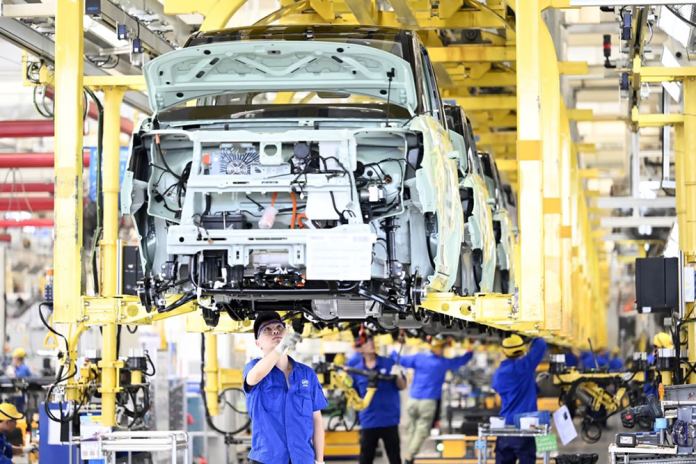According to preliminary estimates, the gross domestic product (GDP) in the first half (H1) of 2023 reached RMB 59,303.4 billion, up 5.5% year on year at constant price, or 1.0 percentage point faster than that in the first quarter of 2023, data from the National Bureau of Statistics (NBS) showed Monday.
By industry, the value added of the primary industry was RMB 3,041.6 billion, up 3.7% year on year; that of the secondary industry was RMB 23,068.2 billion, up 4.3%; and that of the tertiary industry was RMB 33,193.7 billion, up 6.4%. By quarter, GDP grew 4.5% year on year in the first quarter and 6.3% in the second quarter. GDP in the second quarter was up 0.8% quarter on quarter.
China’s economy began to return to normal track from the beginning of the year, with China’s GDP starting off in an upbeat note in the first quarter and the recovery momentum continuing in the second quarter. China’s economic performance, on the whole, picked up in H1 of this year, said NBS spokesperson Fu Linghui at a press conference.
According to Fu, a rebound across virus-hit consumption and services sectors has accelerated, with a strengthened role in driving the economic growth, while that of industrial and agricultural sectors remained stable, providing a solid foundation for the overall economy. The 5.5% first-half GDP growth is significantly higher than the 3% growth rate last year and the average growth rate of 4.5% during the last three years, when COVID-19 disrupted economic activities.
The 5.5% GDP growth is a relatively fast speed in global sphere. Since the beginning of this year, global economic growth has been sluggish, with weak growth in major economies. China’s economy has maintained rapid growth, providing important support for global economic development. In recent days, major international institutions have revised economic forecasts upward, and one important reason behind is the recovery of Chinese economy. In the first quarter, the US, Eurozone, Japan and Brazil reported GDP expansion of 1.8%, 1%, 1.9%, and 4%. That means even taking account into the second-quarter reading, China’s first-half GDP growth still leads major global economies.
The 5.5% GDP growth has underscored an improvement and optimization in economic drivers, from last year’s investment and export-driven to consumption and investment-driven this year. In H1 of 2023, the final consumption contributed to over 70% of economic growth; the service output accounted for more than 60% of the economic growth.
The 5.5% GDP growth is driven by innovation and a change in development mode. In the first six months, investment in high-tech industries increased by 12.5% year on year, the value-added output of information transmission, software and IT service sectors expanded 12.9% year on year, and online retail sales of physical goods went up 10.8%. Meanwhile, the production of solar cells, new-energy automobiles surged by 54.5% and 35%. respectively. Moreover, China’s energy intensity — energy consumption per unit of GDP — decreased 0.4% year on year in the January-June period.
The 5.5% GDP growth is attributed to expansion of opening up and optimization of trade structure. Against the backdrop of sluggish global economic recovery and a slowdown in global trade and investment, China keeps opening its door wider, promotes trade structure optimization, and strengthens economic and trade exchanges with countries around the world. In H1 of 2023, China’s total goods imports and exports expanded 2.1% year on year, with the value of general trade accounting for 65.5% of the country’s total. China’s trade in goods with countries along the Belt and Road jumped 9.8% year-on-year in the January-June period, and its imports and exports with Latin America and Africa increased by 7% and 10.5% respectively.
The 5.5% GDP growth is led by improved employment and people’s livelihoods. The surveyed urban unemployment rate in China fell to 5.2% in June, close to the level of the same period before the COVID-19. Meanwhile, per capita disposable income rose 5.8% from the previous year in the H1. Economic recovery has driven up residents’ willingness to consume and promoted an increase in consumer spending. In the first six months, the per capita consumption expenditure of residents nationwide went up 7.6%.
The 5.5% GDP growth is the achievement of consolidated food and energy security. China secured another bumper summer grain harvest despite the impact of adverse weather. Besides, China has made solid efforts to ensure its energy supply and expand its production capacity. In the January-June period, the growth rate of raw coal, crude oil and natural gas expanded 4.4%, 2.1%, and 5.4% respectively.


